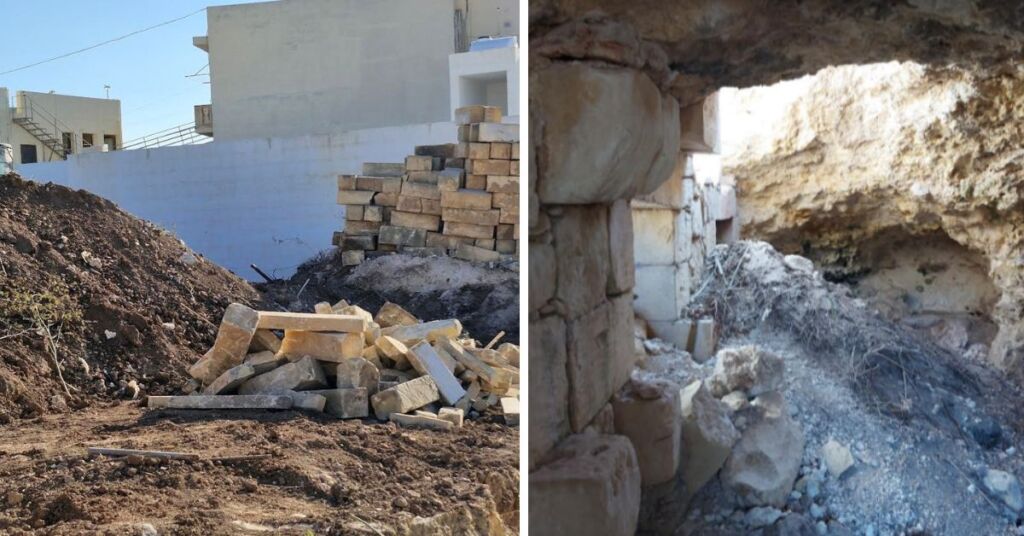Archaeologists Warn Of Threat To Santa Verna Gozo Site

The Superintendence of Cultural Heritage (SCH) has faced criticism by Flimkien Għal Ambjent Aħjar (FAA) for failing to take action to protect Malta’s prehistoric heritage at the Santa Verna temple site, despite its legal obligations under the Cultural Heritage Act.
In a statement, FAA claim that the SCH has ignored repeated calls from the Foundation for Archaeological Advocacy (FAA) and local residents to issue an Emergency Conservation Order. Instead, it has approved PA 03678/23, which is set to be granted today. The plan allows the construction of seven terraced houses on a site where a prehistoric pit containing human skulls arranged in a previously unrecorded ritual burial pattern was discovered.
Initially, the archaeological monitor’s Cultural Heritage Surveillance Data Sheet made no mention of human remains during soil removal work. A local resident alerted FAA upon spotting bones, prompting the matter to be reported to the SCH. A full report from the monitoring archaeologist confirmed the find, yet the SCH has given conflicting statements: asserting at one point that significant remains were nearby but not on the site, and at another claiming only “a single small burial pit” was present and investigated.
View this post on Instagram
FAA has condemned the SCH’s dismissal of the site’s importance, citing British archaeologist Caroline Malone, Emeritus Professor at Queen’s University Belfast, who stated:
“Santa Verna extends over scores of meters beyond the visible megaliths. Scientific excavation reveals remains over 3–5 hectares, including deeply preserved soils with bones, seeds, pottery, structures, lithics, and environmental materials, offering unparalleled insight into Malta’s prehistory. Few comparable landscapes remain in Malta.”
Further concerns arise from the Planning Authority case report, which notes that the proposed development violates DC15 P26, requiring new residential buildings to be at least 6 metres wide. The approval would permit seven cramped houses on a site initially approved for four. Despite this, the authorities appear determined to prioritise economic development over cultural preservation.
SCH representatives reportedly told visitors on site that “economic potential is not going to be sacrificed for a few bones.”
The area around Santa Verna, along with Ġgantija and other Xagħra sites, has been identified by the Cambridge Gozo Survey and previous studies as one of the most important prehistoric localities in the Mediterranean. The survey highlighted “hotspots” of Neolithic and Temple Period activity, emphasising the significance of Santa Verna in providing a continuous, well-preserved sequence of Malta’s prehistoric culture.
FAA emphasises that, contrary to SCH’s public statements, bones were indeed scattered at the entrance and edge of the site, confirming the urgency of protecting Malta’s irreplaceable prehistoric heritage.
What do you make of this?
